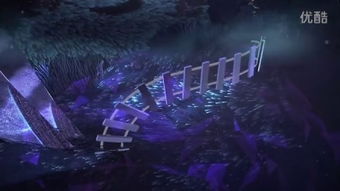Embarking on a solo fishing adventure can be a tranquil and rewarding experience. Whether you're seeking solitude, peace, or simply the thrill of the catch, mastering the art of wild fishing can elevate your solo fishing trips to new heights. Here are some essential techniques to help you succeed in your wild fishing endeavors.
Understanding the Basics
Before diving into the intricacies of fishing techniques, it's crucial to understand the basics. Here are some fundamental aspects to consider:
Choosing the Right Location: Research and choose a location that suits your preferences. Consider factors like water quality, fish species, and accessibility.
Understanding the Environment: Familiarize yourself with the local ecosystem. Observe the behavior of fish, the structure of the waterbody, and the weather patterns.
Appropriate Gear: Invest in quality gear that matches the environment and fish species you're targeting. A basic setup for wild fishing might include a rod, reel, line, hooks, and lures or bait.
Selecting the Right Bait or Lure
The choice of bait or lure can significantly impact your success. Here are some tips:
Natural Bait: If you're using natural bait, ensure it's fresh and suitable for the fish you're targeting. Live bait can be more effective than dead bait, as it often triggers a more aggressive response from fish.
Artificial Lures: Artificial lures come in various shapes and sizes. Choose lures that mimic the natural prey of the fish you're trying to catch. For example, if you're fishing for bass, consider using spinnerbaits or crankbaits that resemble small fish.
Seasonal Considerations: Adjust your bait or lure choice based on the season. In colder months, fish may be more conservative, so using heavier lures or more durable bait might be necessary.
Mastering the Cast
A good cast is essential for reaching your desired spots without spooking the fish. Here are some casting tips:

Practice: Spend time practicing your casting technique. Pay attention to your grip, stance, and the motion of your arm.
Accuracy: Aim for accuracy over distance. Cast to specific spots that you believe fish are holding, rather than casting haphazardly.
Adjust for Wind: If there's a breeze, adjust your casting technique to account for the wind's direction and speed.
Presenting Your Bait or Lure
Once you've cast your line, the way you present your bait or lure can make or break your chances:
Natural Movement: Whether using live bait or artificial lures, mimic the natural movement of the fish's prey. This can be achieved by twitching, jerking, or using a slow retrieve.
Patience: Be patient. Sometimes, the best way to catch fish is to let your bait or lure sit still for a while, allowing fish to investigate and bite.
Reading the Water
Reading the water is a skill that comes with experience but is crucial for successful fishing:
Observe the Surface: Look for signs of fish activity on the water's surface, such as boils, ripples, or fish feeding.
Identify Structure: Pay attention to underwater structures like rocks, logs, or weed beds, as these can be prime spots for fish to hold.
Weather Awareness: Understand how weather conditions can affect fish behavior. Overcast days or windy conditions can sometimes make fish more active.
Handling and Storing Your Catch
Once you've made a successful catch, it's important to handle and store your fish properly:
Gentle Handling: Use a net or a gentle lift to handle fish, minimizing stress and damage.
Safe Storage: If you plan to release the fish, do so as quickly and gently as possible. If you're keeping the fish, ensure you have a proper cooler or ice to keep them fresh.
Final Thoughts
In conclusion, mastering the art of wild fishing requires a combination of knowledge, skill, and patience. By understanding the basics, selecting the right gear and bait, mastering your casting and presentation techniques, reading the water, and handling your catch with care, you'll be well on your way to enjoying successful solo fishing trips. Remember, the key to wild fishing is to adapt to the environment and learn from each experience, allowing you to grow as an angler and appreciate the beauty of nature's underwater world. Happy fishing!












